Vintage designs are statement makers in their own right. Couples looking for a unique engagement ring with charming details fit to match the brides’ beauty and shared romance should consider a vintage or vintage-style engagement ring.
Learn more about the vintage eras to help you choose the right ring.
A diamond halo engagement ring with a floral motif. Style: ER10052PT3JJ
Georgian (1714-1830)
Engagement rings from this particular time period are extremely rare. Majority of Georgian antique rings are handmade, typically from 18k gold and silver. One distinguishing factor of the Georgian Period is the use of many different stone shapes and sizes in one single piece.
Because gemologists lacked the technology we have today, rose cuts and table cuts were commonly used on diamonds, sapphires, garnets, precious topaz, and amethysts. Many Georgian rings also include intricate floral, bow, or scrolling motifs.
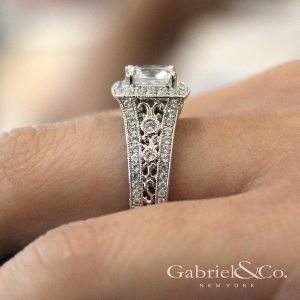
Victorian-styled engagement ring with intricate detailing. Castleton – ER9041W44JJ
Victorian (1835-1900)
Inspired and named after the beloved Queen Victoria, the Victorian Period consists of jewelry trends that were resemble the stylish fashion and jewelry tastes of the Queen. Married in 1840, Queen Victoria wore a snake motif ring set with her green emerald birthstone as her engagement ring.
In the Victorian era, it was very common for birthstones to be used instead of diamonds for engagement rings. Victoria went into a period of mourning when her dear husband died in 1861, inspiring the use of gold lockets and darkened, rustic-like pieces. With the discovery of diamonds in South Africa and the rise of an industrial revolution, diamond solitaire engagement rings were created and jewelry reflected the birth of a new modern age.
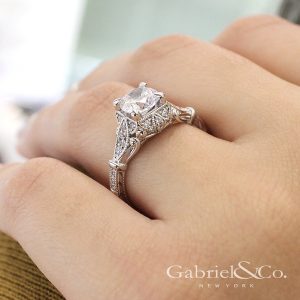
A hand etched band and exquisite detailing. Montgomery – ER12581R4PT4JJ
Edwardian (1900-1915)
Once Queen Victoria passed away in 1901, her son Edward took over the throne, introducing the Edwardian era. During this era, there were huge advances in metal fabrication (cutting, burning, welding, machining, forming, and assembly to create the final product) allowing jewelers to finally work with platinum to produce intricate yet durable pieces.
Jewelry from this period was light, detailed and delicate with diamonds as the gemstone of choice and ‘milgraining’ as THE metal decoration of this time. With these advancement, it is much easier to date jewelry that was manufactured in the early 20th century or later.
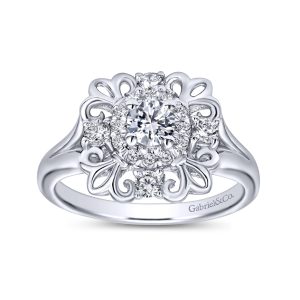
A vintage-inspired diamond halo with intricate floral designs. Style: ER910101W44JJ
Art Nouveau (1985-1915)
As an artistic resistance movement against technological advances, the Art Noveau was born which overlaps the Victorian and Edwardian eras. However, jewelry from this period was praised for hand-craftsmanship, creativity and designs using Japanese themes (birds, dragons, nature) as inspiration.
Diamonds were used scarcely, and gemstones like opals, agate, and moonstones became the highlight of a piece. The most notable design technique of this time was enameling which adds a stained glass effect of rich colors to artistically complement the nature themes.

Inspired by the glitz and glamour of the Art Deco era. Clyde – ER13966R6W83JJ
Art Deco (1915-1935)
Men were off at war while women were taking up roles as the breadwinner, earning their own money and learning valuable skills which later lead to independence of women. Such a bright new perspective on life brought about bold characteristics in jewelry such as an heavy emphasis on geometric designs. Lines were straight and linear, and the gemstone shapes matched.
Sapphires, rubies, and emeralds were precisely cut and used to add splashes of color. Often times, black onyx ad red coral were used as accent colors, white gold was the metal of choice and long strands of pearls worn complementing the “Roaring 20’s” flapper-style.
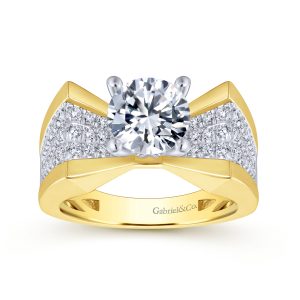
Pave diamonds nestled between the edges of a luxurious yellow gold band. Carol – ER14089R6M44JJ
Retro (1935-1950)
All the jewelry of this era were influenced by Hollywood and all its glamour making it easily identifiable. With the use bright, highly polished gold (yellow, rose, and green gold), jewelry was big, bold and three-dimensional. Large semi-precious gemstones like amethyst, aquamarine, and citrine were the often accented by small diamonds and/or calibre cut rubies and sapphires.
Common design themes from this era include big flowing ribbons and bows, as well as the use of flowers and even animals. Wide gold bracelets, oversized dress clips and earrings that were worn high up on the ear were all popular styles.

Two strands of criss crossing pave diamonds form the extraordinary band of this modern three stone engagement ring. Aria – ER13677R6W84JJ
Modern (1950-present)
The economy grew which lead to the rise in the upper middle class after the war. Jewelry from this era reflected this growth by featuring an abundance of gemstones set in flashy, dramatic designs, with an ultimate focus around diamonds once again.
Though 1950’s jewelry were similar to those of the 1940’s, their execution of designs were different. Opposed to the bulky, high polished look of retro jewelry, modern designs were now more light and textural with engraved finishes and braided rope accents.
Find a vintage inspired engagement ring that can be cherished today, and later become a heirloom for generations to come. Shop our diverse collection of vintage-inspired engagement rings.
To learn more about vintage design details, click here.
The post Vintage Engagement Ring Eras appeared first on Blog | Engagement Rings – Diamond Wedding Rings – Gabriel & Co..
Powered by WPeMatico

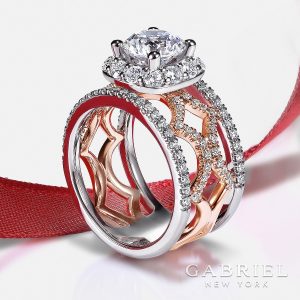
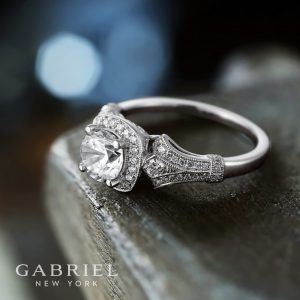

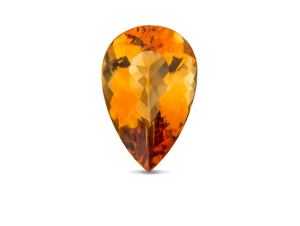


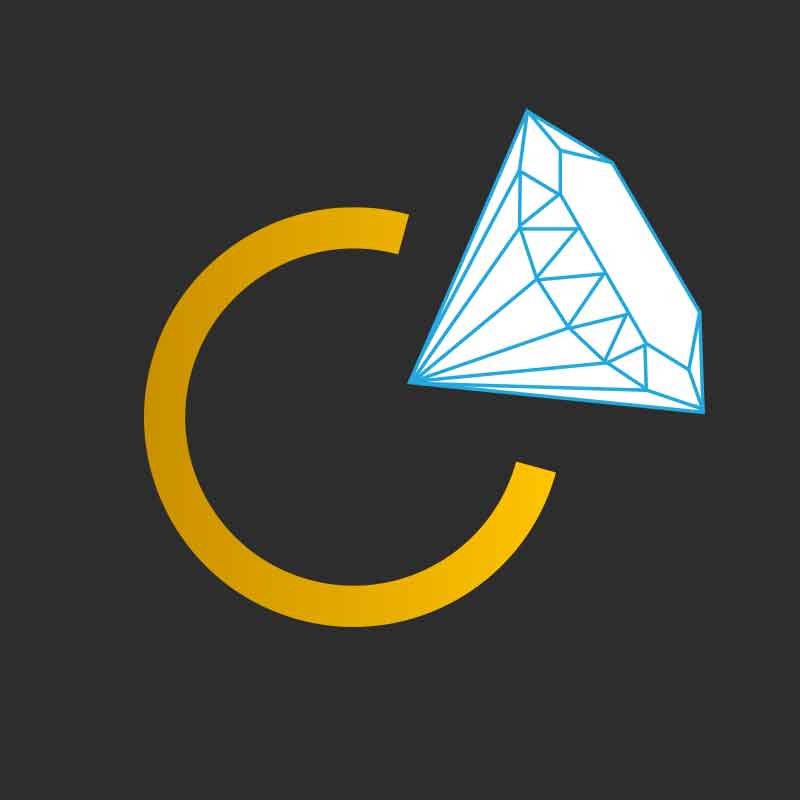
















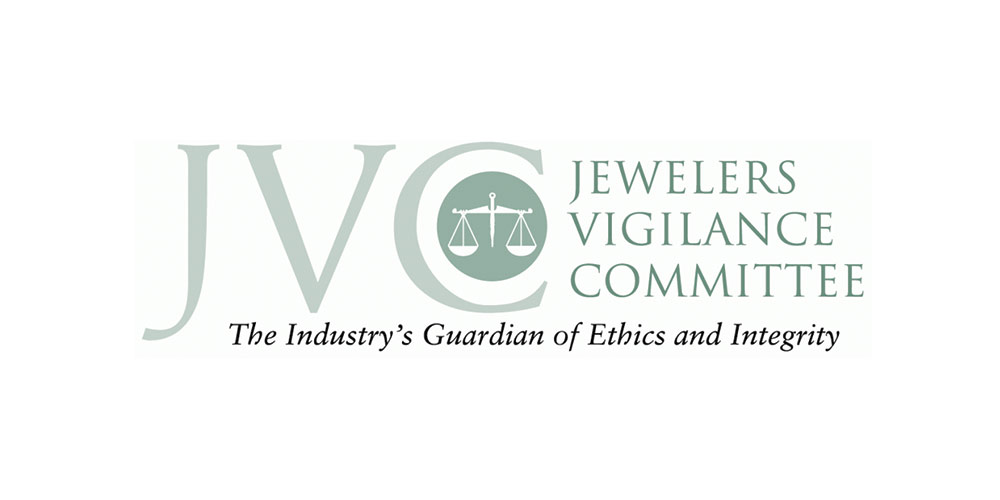

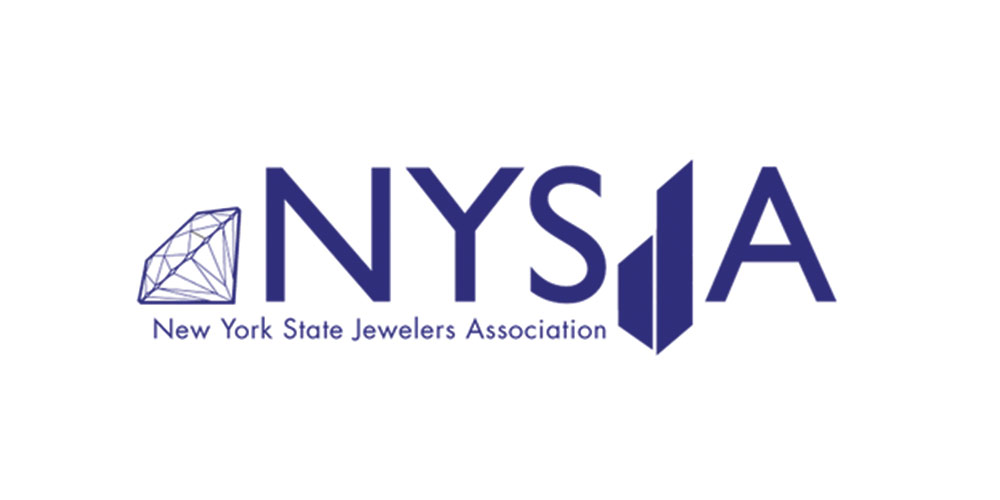

Follow Us